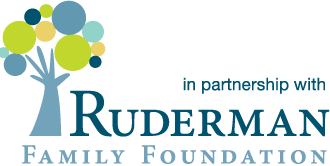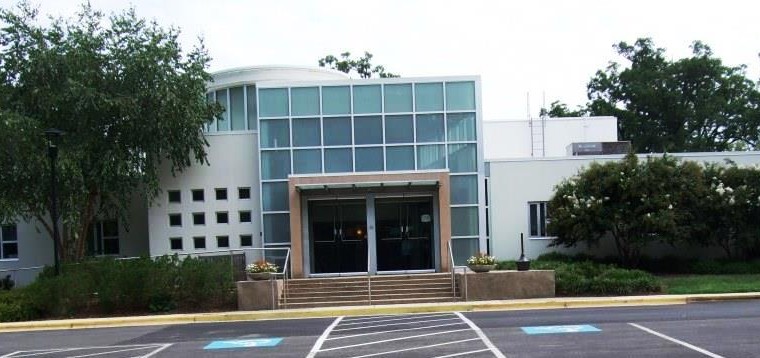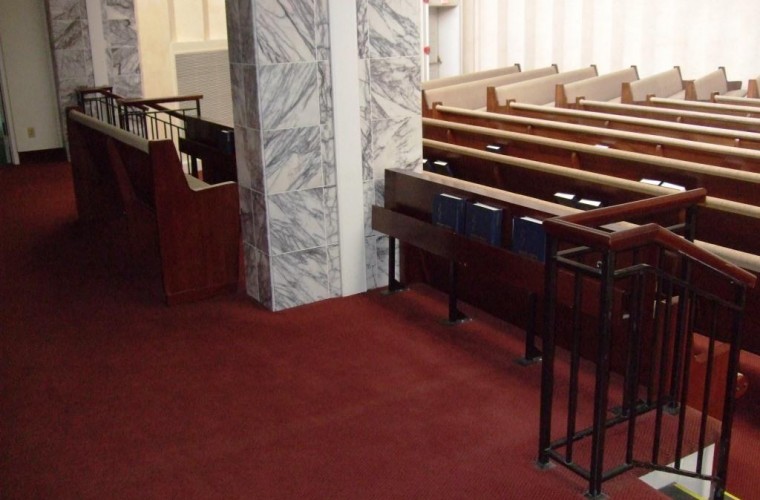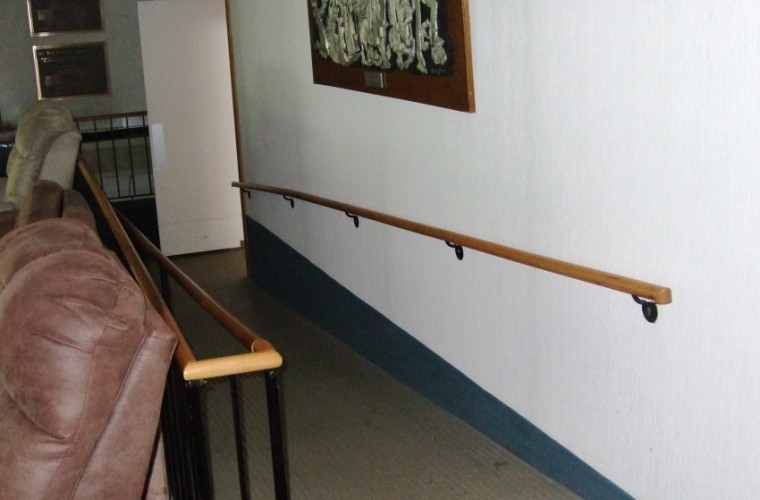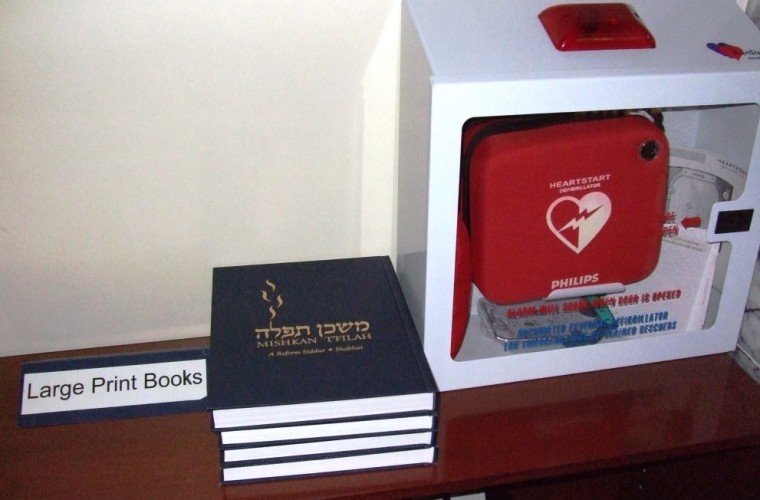Areas of Inclusion: Advocacy & Community Partnerships, Architectural & Physical Accommodations and Transportation, B’nai Mitzvah, General Inclusion, Mental Health, Religious School, and Worship
About the Congregation
3830 Seminary Road
Alexandria, VA 22304
Number of Congregants: 1,000
Contact Information
Inclusion Programming
Does this congregation have an inclusion committee?
Yes
Developing Our Program
What has developed at Beth El Hebrew Congregation is remarkable in that it has grown more organically than a specific policy or program. It would be more accurately described as a culture of inclusion, which began even before our Inclusion Committee was formed in 2008. It is expressed in the general acceptance of the concept that each individual should be able to participate in worship and other activities to the full extent that he or she desires regardless of ability/disability. Congregants step up, reach out, and make accommodations with little or no hesitation—whether it is for a young man with developmental disabilities who works at events with Brotherhood, or a young lady with Down Syndrome who makes matzah balls with Sisterhood, or an aging congregant with mobility issues who wants to participate in worship services, a committee or a club.
Inclusion at Beth El first developed informally. It was driven, in part, by the efforts of a family who wanted their daughter, who has Down Syndrome, to be included and educated in the temple's Religious School—from tot Shabbat through confirmation— just like their two other children. Starting in the 1990s, the Religious School director(s) and teachers, the parents, and the student worked together creatively, with encouragement and support from the Rabbi(s) and Cantor(s), as well as the madrichim and junior congregation coordinators. From second grade through confirmation, the student was included in the Religious School with one-on-one support within regular classes, and pullout for individual instruction when needed. This support was provided by a member of the school's teacher assistants (or madrichim). In fact, one madricha volunteered to work with this student with special needs and her teachers for five consecutive years. (We later found out that the madricha's mother was a special education teacher.) The student participated fully in all aspects of Religious School life—regular classes, junior congregation services, local and out-of-town field trips, retreats, Shul-ins, and events. The bat mitzvah of this student, during which she read in English and Hebrew and gave the D'var Torah much as any student would have done, was widely anticipated and widely attended. The student's success demonstrated effectively and persuasively what was possible through an inclusive community effort.
The congregation's then-cantor, Sharon Steinberg, was instrumental in creating the student's successful B'nai Mitzvah program, tirelessly tutoring her in Hebrew and teaching her trope. The Cantor worked similarly with other students with special needs. Inclusion was extremely important to Cantor Steinberg; she had three children who had "invisible" disabilities, and she was looking for ideas and support. It was Cantor Steinberg's idea to create Beth El's Inclusion Committee. The Cantor became aware of work being done in other temple communities and contacted Shelly Christensen from the Minneapolis Jewish Community Inclusion Program for People with Disabilities. She purchased several copies of Shelly's book, "Jewish Community Guide to Inclusion of People with Disabilities" and began distributing them and attending local workshops and events. The Cantor also got in touch with Congregation Beth El of Montgomery County, MD, which was a local leader in inclusion at the time. In April 2008, an email went out to more than 45 people who had expressed interest in the creation of an Inclusion Committee. Many of these individuals either had disabilities or had family members with disabilities. The Cantor also placed an article in the Beth El newsletter and spoke from the Bima, inviting congregants to join the committee. The meeting was a standing-room only event held in April 2008. Following it, about 15 dedicated congregants began attending monthly Inclusion Committee meetings that started in June.
The Committee's first project was to create a mission and vision statement. (See attached documents.) To establish priorities, the committee interviewed the clergy and congregants responsible for Beth El programs such as the preschool, religious school and temple committees, and undertook a congregational survey. They developed an action plan with goals that included improving the accessibility of the Beth El buildings and grounds; increasing congregational awareness on disability/inclusion; creating outreach materials for Religious School registration and the membership packet, the newsletter, High Holy Days and Shabbat folders, etc.; even reviewing the types of foods served by Brotherhood and the Women of Reform Judaism (Sisterhood) to make sure that foods would be available for people with common allergies and common disabilities (e.g., diabetes). Much has been accomplished.
Educational activities, such as speakers or films designed to improve public awareness, have become a standard part of congregational activities. A lot of progress has also been made on making Beth El a welcoming facility – from the two-way swinging door at the bottom of the wheelchair ramp into the sanctuary to the handrails on the ramp up to the front doors and the addition of large print signage (for example, showing the way to the sanctuary and the coat room) to the availability of large print siddurs, assistive hearing equipment, and wheel chairs for services. There are also four large electronic signs in the main hall outside the sanctuary that provide information on current and upcoming temple events. Some others improvements, like an ADA-regulation ramp to the Bima, which will require major renovations, are planned for the next renovation of the sanctuary. Others, like an elevator to Religious School classes on the second floor, are still waiting for funding.
But perhaps the most dramatic accomplishments regarding inclusion of people with disabilities at Beth El have occurred in the Religious School. Increasing the awareness of the young people in the Religious School was one of the early priorities of the Inclusion Committee. The Inclusion Committee has worked with the Religious School and the Rabbi and Cantor(s) to ensure that special disability awareness programs and Shabbats have been held to help students understand special needs. One time, an older student with special needs went to talk to students in the lower grades. Other times, each grade was given an assignment to learn about a specific type of disability and then each would make presentations to the others. Other times, younger classes were read children's books with a focus on inclusion. Each year, disability awareness education was integrated into special junior congregation Shabbat programs or regular Shabbat services. In one junior congregation service, a student with Tourette's syndrome gave a D’var Torah about how his disability affects his life. Another time, a student with multiple disabilities including Cerebral Palsy gave the D’var Torah in the regular Shabbat service. Two congregants with Down syndrome, a 20-year-old and an approximately 40 year old, read from the siddur during the same service.
That said, the Religious School was moving toward greater inclusion even before the Inclusion Committee was created. The current Religious School Director, Barry Smith, came to Beth El in 2003. All three previous Religious School directors had worked actively to accommodate students with disabilities on an as-needed basis. The Religious School Director immediately preceding the current director won a Jewish Federation-funded ICE Initiative for Education, three-year grant for special needs education. This funding was still in effect when the current director, Barry Smith, arrived. Under Smith's stewardship, training educators and madrichim to be inclusive became an explicit priority. Smith explains his philosophy, succinctly: "All kids have special needs and different learning styles. Inclusion and differentiated instruction, therefore, are tools that support all of the students." Beth El Religious School teachers and madrichim receive teacher training that is consistent with this philosophy. In fact, from 2006 through 2012, Beth El's madrichim took part in a Northern Virginia (NOVA) teacher training on disability/inclusion, a collaborative learning effort provided by Matan, an organization devoted to inclusion in both supplemental and day school Jewish learning. The concept of inclusion has also been taught to Beth El Religious School classes in a most basic way—through example. Several high school and college age individuals with disabilities have served as madrichim in younger students' Religious School classes.
Beth El Religious School senior staff has received ongoing training, too. On May 2, 2013, Smith and the Assistant Education Director, Laura Naide, attended training held at Temple Beth Ami in Rockville, MD, sponsored by Matan and titled, " TZEDEK TIRDOF - Pursuing Justice Through Inclusion." Speakers at this event included Stuart J. Schleien, Professor, Chair, and Director of Graduate Study in the Department of Community and Therapeutic Recreation at the University of North Carolina at Greensboro, and Aron Hall, the Director of Programs for The National Inclusion Project.
In September 2014, the Religious School hired an Inclusion/Special Needs Coordinator, Marissa Smolinsky, to work with parents, teachers and students on an as-needed basis. Smolinsky's position is funded by Beth El's Brotherhood, and she works at the Religious School each Sunday, and is on call for additional support as needed. She spends a lot of time observing teachers and students in Religious School classrooms, training teachers, and working with students inside and outside the classroom. This coming school year, 2015-2016, two of the madrichim are being trained to assist Ms. Smolinsky and help to provide support to students with special needs.
Also, in fall 2014, the Religious School Director's old office was transformed into the "Shalom Lounge," a safe space for use by individual students or groups of students. It is meant to be a place for taking time out in a positive sense—so that students who cannot attend to a large group class activity for the whole time, students who need to be tutored individually, and those who need to work in a small group have a welcoming place to go. The lounge got a lot of use this year because one student had trouble staying in his seat for a full class period. When class became overwhelming for him, he was taken to the Shalom lounge, where he had the space and quiet to calm down; Ms. Smolinsky would then join him and provide some one-on-one instruction.
On November 4, 2015, Beth El will participate in the Northern Virginia (NOVA) Professional Day for Jewish Educators, another collaborative effort being led by instructors from Matan. The theme for the Kallah is “Creating a Culture of Inclusion” and Beth El Religious School Director Smith is a co-chair of the event. Beth El received funding from the Jewish Federation of Greater Washington I.C.E. grant program for $3,000 which will assist in paying for Matan's services and allow approximately 200 NOVA Jewish educators to participate in the activity.
In terms of education for life cycle events, Beth El's current Cantor, Jason Kaufman, creatively designs supports and accommodations to facilitate effective and rewarding B'nai Mitzvah programs for students with special needs. Additionally, in February 2015, the Cantor represented the congregation at Disability Advocacy Day on Capitol Hill, which is chaired by the Jewish Federations of North America and the Religious Action Center. Cantor Kaufman, who sits on the URJ Commission on Social Action, also invited Jordan Dashow, who was then one of the legislative assistants at the Religious Action Center, to speak at the congregation's disability awareness Shabbat.
Since September 2014, Cantor Kaufman, Director Smith, and one of the madrichim have worked together to implement the URJ-created visual tefillah for kindergarten through third-grade students to create a multi-dimensional tefillah program for Religious School services and tefillah. The visual tefillah helps to engage students and enhance their understanding. It is benefiting all the young students, but also has very important learning benefits for students with special needs.
Looking forward, Smith is very excited about a collaborative program that Beth El will implement in 2016 with two other local shuls, Congregation Etz Hayim and Congregation Adat Reyim. It will train a core group of Beth El's teachers, staff involved with youth programing, and the special needs coordinator about methods for teaching students who have disabilities and other students who have a need for differentiated instruction. The training aims to continue the process of creating a culture of inclusion, allowing our teachers to excel even more in creating inclusive classrooms. The ICE grant award to our cohort is $6,900, and the ICE Grant Committee has asked us to expand the scope of the program to include a session with lay leaders and to tape all of the sessions. In this way, Beth El is not only working to improve inclusion within its congregation, but also to help spread inclusive attitudes and practices.
Program Development Links
Program Development Documents
Number of people involved in the effort: 1,000.
Almost the entire congregation, in one way or another, is involved in this effort. The clergy, the ushers, and congregants help other congregants who come to worship to feel welcome and make use of needed accommodations. The Inclusion Committee currently numbers a few dedicated advocates, but the members of the other temple committees and clubs (e.g., Brotherhood, Women of Reform Judaism, Caring Community, Renaissance Club etc.) strive to ensure that all those who want to participate can, regardless of their level of ability or special needs.
Certainly all of the approximately 220 young people in the religious school (K-Post-Confirmation class) are involved: some make use of accommodations to be included, and all are taught about special needs/inclusion. All of the Religious School staff, teachers, and madrichim attend disability/inclusion training.
Involving People with Disabilities
More than 45 people expressed interest in forming the inclusion committee. Many were individuals with disabilities and many others were families of congregants with disabilities. Congregants with disabilities have continued to participate in disability awareness programs held at the Religious School and on Shabbat, and during these programs a few have talked publicly to the congregation about living with a disability, advocacy, and awareness. Also, congregants with disabilities have increased awareness at Beth El by being actively involved in our temple programs—as worshippers, leaders or members of committees and clubs, religious school students, and madrichim. In addition, surveys of the congregation were undertaken twice (once upon formation of the Inclusion Committee and once in the last couple of years) that asked congregants about their needs and what our congregation might do to improve the accessibility of worship and other activities.
Funding This Effort
When the Inclusion Committee was formed, its members talked about fundraising and they created the Inclusion Fund, which was approved by the temple on September 16, 2008. Soon after, the adult B'nai Mitzvah class did a fundraiser and gave the proceeds to the Inclusion Fund. Congregants often make donations to this fund when they are pleased about how inclusion/accommodations are handled at Beth El for a family member, perhaps for a special life cycle event. On October 16, 2012, when inclusion advocate Cantor Sharon Steinberg was leaving the congregation, the fund was renamed the Cantor Sharon Steinberg Fund for Inclusion. The Religious School has received funds for training on inclusion from the Jewish Federation's Initiative on Congregational Education grant program, and funding is sometimes provided from the Beth El budget. Funding for the Religious School's Inclusion/Special Needs Coordinator has been provided by the Beth El Brotherhood.
Helpful Agencies & Organizations
1) Shelly Christiansen, Minneapolis Jewish Community Inclusion Program for People with Disabilities. Advice was provided to Beth El's Cantor Sharon Steinberg and others about how to start an inclusion committee and the process of becoming an inclusive Jewish community.
2) The Matan Institute – Meredith Polsky, Matan Director of Training and Advocacy. Beth El's Religious School Director has worked closely with Matan over many years, getting training on all aspects of inclusion/special needs for the religious school staff, teachers, and madrichim.
3) Jewish Social Services Agency, Rebecca Porter. Rebecca Porter has provided advice and materials and participated in programs sponsored by the Religious School for teens and by the Inclusion Committee for older adults on depression and suicide and what to do if you believe you know someone who is at risk. She and others at JSSA including Beth El member Dawn Kaye have participated in discussions and answered questions. (Ms. Kaye also collaborates with staff from the Jewish Community Center of Northern Virginia on developing and managing the “Going Places!” social clubs for teens, young adults and adults 30+ who are on the autism spectrum or have a similar level of disabilities/special needs, and some Beth El members attend these programs.)
4) Jewish Community Center of Northern VA, Dan Kirsch, Cultural Arts Director; Jessica Tischler, Special Needs Director. These individuals are helping the Inclusion Committee to get involved with the ReelAbilities Film Festival as an outreach and venue partner. Also Jessica Tischler has helped informally with special needs questions, as have others at the JCCNV.
5) Arc of Northern Virginia, Rikki Epstein, Executive Director. Ms. Epstein has helped in informal discussions and is scheduled to be the speaker at an Inclusion Committee educational event about people with disabilities living semi-independently and community inclusion that will be held at Beth El this fall.
List of Helpful Agencies & Organizations
Spreading Awareness About Our Work
To be successful, outreach must take myriad forms. We use the Beth El Bulletin (newsletter) online and in hard copy, which is mailed to congregants; announcements by the rabbi or a temple board member from the Bima; posters, fliers, and word of mouth. We are lucky to have inclusion advocates who are members of the Board as well as temple committees and clubs who help to get the word out in informal and formal ways. In addition, we sometimes publicize information about special Inclusion Committee events to other local Jewish congregations and through the JCCNV. For example, the JCCNV is assisting us in facilitating an upcoming Beth El Inclusion Committee-hosted event with a ReelAbilities Festival film. The event will be publicized in the JCCNV fall newsletter. Also, these events are sometimes publicized through disability organizations or programs, such as the Arc of Northern VA, Best Buddies, etc.
Links About Spreading Awareness
Process & Sharing
Marketing Documents Indicating Our Commitment to Inclusion
History, Materials & Processes that Guided Our Approach
Beth El has a website. Our commitment to inclusion is reflected on the "Our Vision and Values" page (See Beth El Vision, above); the Inclusion Committee is listed under "Committees" and the Cantor Sharon Steinberg Fund for Inclusion is listed and explained briefly under "Special Funds."
History, Materials & Process Links
History, Materials & Process Documents
Evidence of Successful Inclusion Efforts
The evidence is in the participation of people with disabilities at Beth El—not only in worship at Beth El, but in all activities as described in this application. An anecdote might help to convey this culture of inclusion…
In July 2015, the Inclusion Committee Chairman received an email from Beth El's volunteer coordinator stating that certain congregants, the parents of a young man with autism, were hoping to find a way for their son to become more involved in the congregation, perhaps through volunteering. The chair sent a few emails to the Religious School and temple committees. Within two-three days, the chair had received suggestions about several possible volunteer jobs within the temple, and offered to meet with the young man and his parents to brainstorm and create a plan. There was even an offer to oversee the young congregant's volunteer program. Another example can be taken from this year's confirmation class Shabbat service. Speaking from the Bima, a young man with autism told the congregation that he'd felt like an outsider everywhere except at Beth El.
Evidence of Changing Attitudes
It is no longer considered remarkable when someone with a disability is actively involved in worship and/or other temple activities and events. Congregants don't say, "can we include," they ask, "how can we include?"
How We're Using and Sharing the Disabilities Inclusion Learning Center
Becoming a fully inclusive and welcoming congregation is a continual process. There are still several areas in which we need to move forward and make further improvements. The study sessions and other resources on the Disabilities Inclusion Learning Center will be an important resource for this effort.
Future Inclusion Efforts
We hope to install a ramp to the Bima during the next set of sanctuary renovations. We plan to eventually find a way to be able to afford an elevator to the second floor of the Religious School. We need to update the website to reflect the progress that we have made in becoming a truly inclusive and welcoming congregation. We need to be more proactive in publicizing our commitment to a policy of inclusion and providing needed accommodations on our website, in our newsletter, and in the High Holy Days and new member packets. Much of this was done in the early years of the Inclusion Committee, and it needs to be done again.

